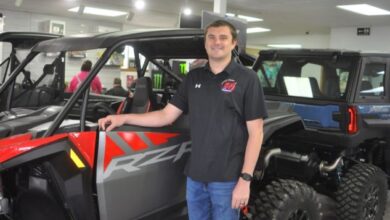Mar. 9, 2009: Creating sales goals and restricting access to PG&A
These articles recap some of the opportunities uncovered by Gart Sutton & Associates’ powersports specialists during consulting visits.
These are followed by recommended actions that address the issues. Our goal is to provide ideas to help improve your dealership.
Dealership Details
This is a multiline dealership located in a city of 50,000 with a drawing area of around 400,000. It has an excellent, freeway frontage, high-traffic location. They had been a part of a group of dealers owned by a large corporation and had a poor reputation for customer service. In March, they were purchased by the current owner, who previously owned several unrelated businesses. The new owner has been remodeling and upgrading the facility and signage.
In the first two parts of the series on this dealership, GSA consultants reported on their analysis of the overall dealership and the sales department. This third report focuses on the parts and accessories department.
Parts department
The parts manager has worked in parts for more than 30 years and has been with this dealership for five years. He has some sales background as well.
There is discounting of parts to service. The sales department is charged cost plus 20 percent. They are not using price escalators. They were encouraged to eliminate all interdepartmental discounts and apply parts price escalators in order to increase profitability and allow comparisons with industry benchmarks. There are no customer discounts or customer charge accounts. There are no sales goals for the parts department or parts staff.
There was a discussion about developing theme and lifestyle clothing and accessories displays in the showroom to increase visualization and mental ownership opportunities for the customers. This will lead to increased sales of units as well as P&A.
Parts are stocked in numerical sequence and are binned geographically. There was a discussion of the advantages of stocking by size and movement and compacting storage through the use of multi-drawer cabinets. Clothing and accessories are not bin-located. There was a discussion of creating categorical bins for these items. This will enable cycle-counting and tracking of these items.
Although the parts manager is familiar with cycle counting, they have not yet begun the process. He was encouraged to implement counting of one bin per day as soon as possible.
The service writer and service manager are allowed to pull and charge parts to service. They are in the process of creating a parts/service access window and will establish a parts-to-service liaison person. This will improve service efficiency and inventory accuracy.
Implementing an open-to-buy process to control the inventory valuation was discussed and encouraged.
All employees have access to changing parts quantities. It is vital that this is restricted to the department manager and the general manager in order to reduce the potential for shrinkage.
There is around $90,000 in obsolete P&A. There was a discussion of the options they could use to eliminate this stock. This will free up space and funds that can be used to stock popular, high-turn inventory.
Action Items
Restrict part number quantity edit access to the parts manager and general manager.
Develop categorical bins for clothing and accessories.
Implement cycle-counting: One bin per day, every day.
Parts manager to do random 25 number spot checks on a monthly basis.
Verify the proper categorization of all P&A in inventory. Ensure the process is followed with all received stock.
Select a person to become a dedicated parts-service liaison. Can do other jobs as well, but this must be their priority.
Verify and eliminate non-movers (no sales in 12 months). Run the non-movers report monthly to keep inventory current.
Ensure lost sales are being tracked. Include all special order items that are not ordered for stocking.
Provide sales training for the P&A staff.
Utilize the Riding Gear Checklist to increase clothing and accessories sales to new bike purchasers.
Create theme and lifestyle displays for accessories and major units.
Develop basic rider gear packages and utilize mannequins to increase visualization. Develop signage like: “Include this package with your bike purchase for as little as $XX per month.”
Work with upper management to establish monthly sales goals and incentives.
Work with sales on accessories application and stocking potential.
Consider arranging selected parts by movement and size where applicable.
Gart Sutton has been a leading provider of on-site dealer consulting, dealer 20-groups, online financial composites, accounting rescue services, and OEM and dealership training solutions for nearly 30 years. For additional information on these services, visit www.gartsutton.com








